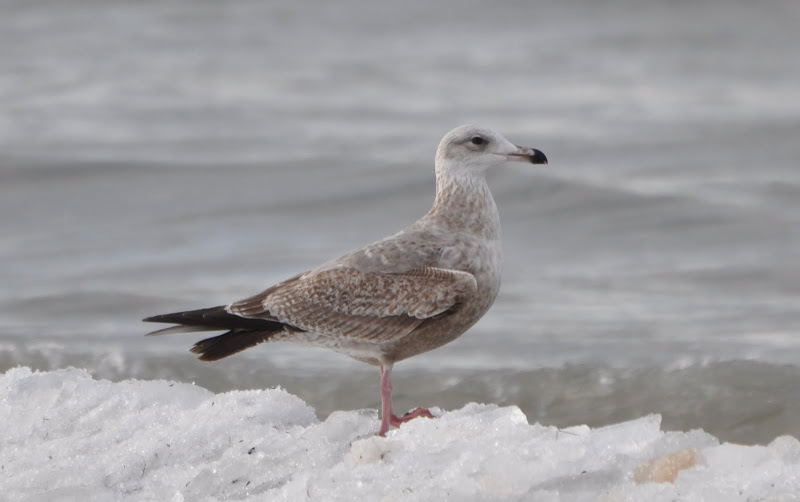 American Herring Gull (smithsonianus)
American Herring Gull (smithsonianus)
(last update: October 30, 2015)
American Herring Gull (smithsonianus) 1st cycle (1CY) December 22 2010, Miller Beach, Gary, IN. Picture: Amar Ayyash.
Initial impression was perhaps a delayed 2nd cycle bird because of the combination of the gray scapulars, bleached head and neck, and the pale coloration to the bill. The basal part of the bill seemed a bit too pale for a 1st cycle in December. 1st cycle Herrings usually, but not always, retain more black in the bill in the early part of the winter season; some will have the basal 2/3 of the bill completely pale with just a black tip.
The head on this bird is bleached along with parts of the neck and chest - a look that's not really expected in early winter. After a closer look at the upperwing coverts, a pattern that's much more consistent with a younger bird is revealed. 2nd cycle individuals have a finer pattern to the greater coverts or sometimes show signs of abrasion and fading. The flight feathers were those of a juvenile in its first molt cycle. This individual is probably no more than 6 to 7 months old.

